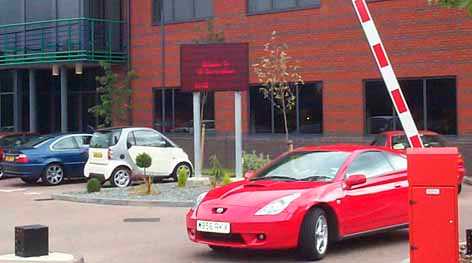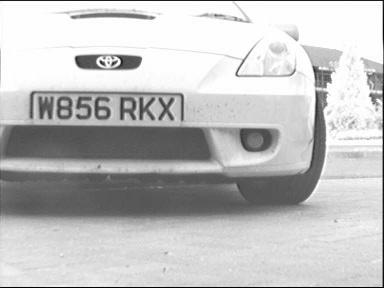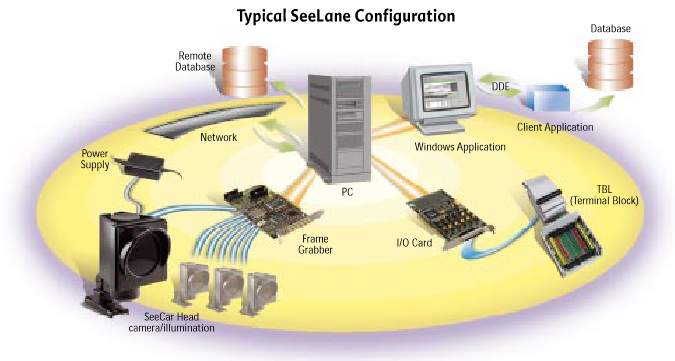WHAT IS LPR?LPR (License Plate Recognition) is an image-processing technology used to identify vehicles by their license plates. This technology is used in various security and traffic applications and various access-control systems. When a vehicle approaches the gate, the LPR unit automatically “reads” the license plate registration number, compares it to a predefined list and opens the gate if there is a match. TECHNOLOGY HIGHLIGHTS:This technology is gaining popularity in security and traffic installations. The technology concept assumes that all vehicles already have the identity displayed (the plate!) so no additional transmitter or responder is required to be installed on the car. The system uses illumination (such as Infra-red) and a camera to take the image of the front or rear of the vehicle, then image-processing software analyzes the images and extracts the plate information. This data is used for enforcement, data collection, and (as in the access-control system described above), can be used to open a gate if the car is authorized or keep a time record on the entry or exit for automatic payment calculations. The LPR system’s significant advantage is that the system can keep an image record of the vehicle which is useful in order to fight crime and fraud: “an image is worth a thousand words”. An additional camera can focus on the driver’s face and save the image for security reasons. Additionally, this technology does not need any installation per car (such as in all the other technologies that require a transmitter be added on each car or carried by the driver). OTHER NAMES / REFERENCES FOR LPR:● Automatic Vehicle Identification (AVI) PLATES AND IMAGESLPR units are based on images of the front and/or rear plates.The following example shows a typical installation of an access-control system in the gate of a secured office compound.
The car, with the plate number: W856RKX, is just exiting from the secured area and is picked up by the LPR system which identifies it as an authorized car and opens the gate. A welcome display (which includes the vehicle number and driver name) is displayed in the large outdoor display near the back of the car. A typical image captured by the Infra-red illumination and camera unit is shown in the following image (this image is of the same car above). The image information is read by the LPR unit and is analyzed and recognized automatically. Note that the image is monochrome since the infra-red spectrum is above the normal color spectrum.
Since the vehicle plates are based on different country standards, they usually differ in form, shape and material. Therefore the LPR systems are country-specific and are adapted to the country where they are installed and used: the above case shows a UK installation. DOES IT WORK?Early LPR systems suffered from a low recognition rate, lower than required by practical systems. The external effects (sun and headlights, bad plates, wide number of plates types) and the limited level of the recognition software and vision hardware yielded low quality systems. However, recent improvements in the software and hardware have made the LPR systems much more reliable and widespread. You can now find these systems in numerous installations and the number of systems are growing exponentially, efficiently automating more and more tasks in different market segments. In many cases the LPR unit is added as retrofit in addition to existing solutions, such as a magnetic card reader or ticket dispenser/reader in order to add more functionality to the existing facility. Even if the recognition is not absolute, the application that depends on the recognition results can compensate the errors and produce a virtually flawless system. For example, when comparing the recognition of the entry time of a car to the exit time in order to establish the parking time, the match (of entry verses exit) can allow some small degree of error without resulting in an invalid recording. This intelligent integration can overcome some of the LPR flaws and yield dependable and fully automatic systems. ELEMENTS OF TYPICAL LPR SYSTEMSLPR systems normally consist of the following units: The following illustration shows a typical configuration of a LPR system (for example, for 2-lanes-in and 2-lanes-out access control system). The system (“SeeLane”) is a typical example of such system.
The SeeLane application runs as a background Windows application in the PC (shown in the center), and interfaces to a set of SeeCar Head camera/illumination units (one for each vehicle) which are interfaced by the frame grabber. The application controls the sensors and controls via an I/O card that is connected thru a terminal block to the inputs and outputs. HOW DOES IT WORK?The following example shows how a typical access-control system works. It follows the order of the images below.
TYPICAL APPLICATIONS:LPR applications have a wide range of applications, which use the extracted plate number and optional images to create automated solutions for various problems. These include the following sample applications: ● Parking – the plate number is used to automatically enter pre-paid members and calculate parking fee for non-members (by comparing the exit and entry times). The optional driver face image can be used to prevent car hijacking. In this example, a car is entering a car park in a busy shopping center. The car plate is recognized and stored. When the car will later exit (through the gate on the right side) the car plate will be read again. The driver will be charged for the duration of the parking. The gate will automatically open after payment – or if the vehicle has a monthly permit. ● Access Control – a gate automatically opens for authorized members in a secured area, thus replacing or assisting the security guard. The events are logged on a database and could be used to search the history of events. In this example, the gate has just been automatically raised for the authorized vehicle, after being recognized by the system. A large outdoor display greets the driver. The event (result, time and image) is logged in the database. ● Tolling – the car number is used to calculate the travel fee in a toll-road, or used to double-check the ticket. In this installation, the plate is read when the vehicle enters the toll lane and presents a pass card. The information of the vehicle is retrieved from the database and compared against the pass information. In case of fraud the operator is notified. ● Border Control – the car number is registered in the entry or exits to the Country, and used to monitor the border crossings. It can short the border crossing turnaround time and cut short the typical long lines. This installation covers the borders of the entire Country. Each vehicle is registered into a central database and linked to additional information such as the passport data. This is used to track all border crossings. ● Stolen cars – a list of stolen cars or unpaid fines is used to alert on a passing ‘hot’ cars. The ‘black list’ can be updated in real time and provide immediate alarm to the police force. The LPR system is deployed on the roadside, and performs a real-time match between the passing cars and the list. When a match is found a siren or display is activated and the police officer is notified with the detected car and the reasons for stopping the car. ● Enforcement – the plate number is used to produce a violation fine on speed or red-light systems The manual process of preparing a violation fine is replaced by an automated process which reduces the overhead and turnaround time. The fines can be viewed and paid on-line. The rear vehicle plate is automatically extracted off the scanned film image, replacing a tedious manual operation and the need to develop and print the violation. The image metadata contains additional speeding information that is automatically extracted from the developed film and used to complete the fine notice and inserted to a database. The violators can pay the fine on-line and are presented with the photo as a proof with the speeding information. ● Traffic control – the vehicles can be directed to different lanes according to their entry permits (such as in University complex projects). The system effectively reduces traffic congestions and the number of attendents. In this installation the LPR based system classifies the cars on a congested entrance to 3 types (authorized, known visitors, and unknown cars for inquiry) and guides them to the appropriate lane. This system reduced the long waiting lines and simplified the security officers work load. ● Marketing Tool – the car plates may be used to compile a list of frequent visitors for marketing purposes, or to build a traffic profile (such as the frequency of entry verses the hour or day). ● Average Speed Over Distance (ASD) – A number of LPR units are installed in different locations in city routes and the passing vehicle plate numbers are matched between the points. The average speed and travel time between these points can be calculated and presented in order to monitor municipal traffic loads. Additionally, the average speed may be used to issue a speeding ticket. In this example the car is recognized at two points, and the violation shows the photos of both locations which were taken on bridges on top of the highway. The average speed of the car is calculated from both points, and displayed if the speed passed a violation threshold, and optionally printed. ● Airport Parking – In order to reduce ticket fraud or mistakes, the LPR unit is used to capture the plate number and image of the cars. The information may be used to calculate the parking time or provide a proof of parking in case of a lost ticket – a typical problem in airport parking which have relatively long (and expensive) parking durations. |









